AFO in Joint Lamination Technique
- Physical Exam
- Planning the Orthosis
- Model Technique
- Handing Over the Orthosis
- Maintenance
- Products in the Spotlight
- Downloads
FIOR & GENTZ
Gesellschaft für Entwicklung und Vertrieb von orthopädietechnischen Systemen mbH
Dorette-von-Stern-Straße 5
D-21337 Lüneburg
Tel.: +49 4131 24445-0
Fax: +49 4131 24445-57
E-Mail: info(at)fior-gentz.de
Beratung und Technischer Support
AFO
in Joint Lamination Technique
This online tutorial describes the production of an AFO (Ankle-Foot Orthosis) in Joint Lamination Technique. In contrast to the Anchor Lamination Technique, the system anchors and system cases are embedded into the laminate in the Joint Lamination Technique.
The exemplary orthosis with a NEURO SWING system ankle joint shows the following construction:
- unilateral
- partially flexible foot piece
- ventral shell
- Joint Lamination Technique
The presented production technique can also be applied to the NEURO CLASSIC-SWING and NEURO SWING-CLASSIC as well as the plug + go system joints, as it involves the same or similar system components.
You will find further work steps in the Joint Assembly NEURO SWING online tutorial.
-
Mounting the Assembly/Lamination Dummy
-
Step 1/1
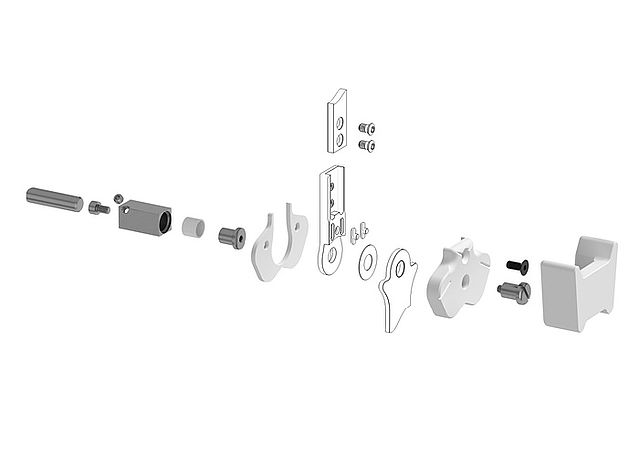
Mount the system joint by using the assembly/lamination dummy and in accordance to the exploded view drawing. When laminating, the dummy serves as placeholder for the system joint's cover plate.
Note: You can find exploded view drawings in our product cataloge System Joints and Articulated System Side Bars
-
Bending the System Stirrup/Anchor
-
Step 1/11
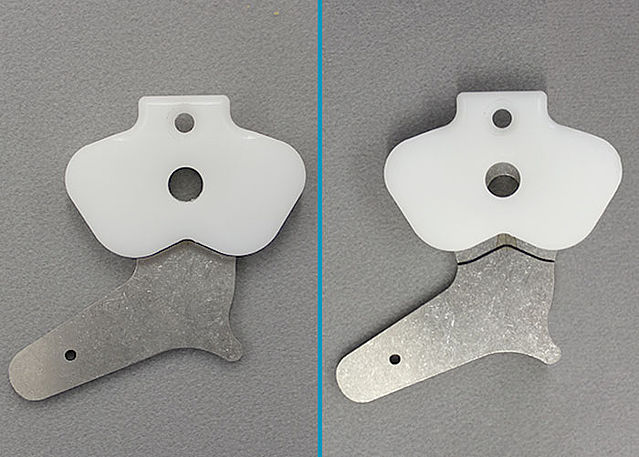
First, mark the lower edge of the dummy on the system stirrup. Everything above this line must not be bent, as this area (the joint area) is a part of the system joint later.
Step 2/11
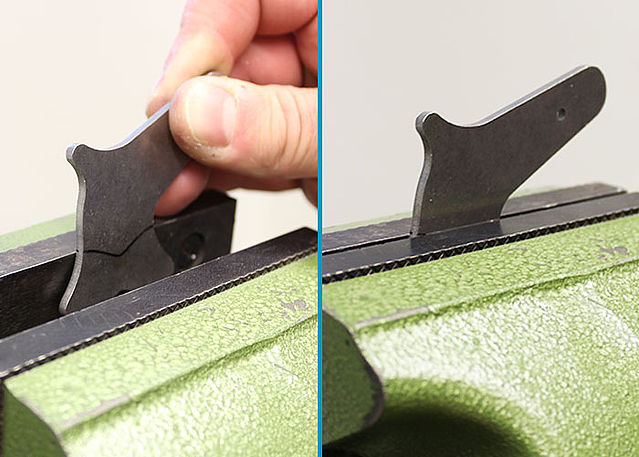
Clamp the system stirrup into a vice with plain jaws to bend it. Pay attention to the marking to avoid a subsequent deformation of the joint areas and to be able to bend very close to the joint.
Note: When you have acquired a bent system stirrup, you can skip the steps 2 to 4.Step 3/11
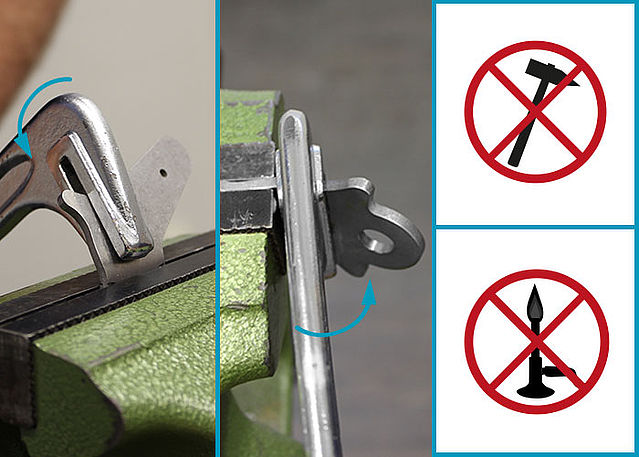
Adapt the system stirrup to the shape of the model. Bend the system stirrup neck with a bending iron. Only bend in one direction.
Note: Do not use a hammer and do not heat the material.Step 4/11
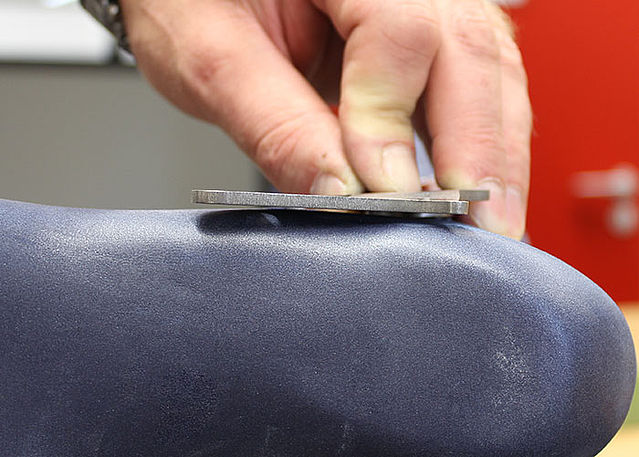
Remove the system stirrup from the vice and check the distance between the system stirrup and the model.
Step 5/11
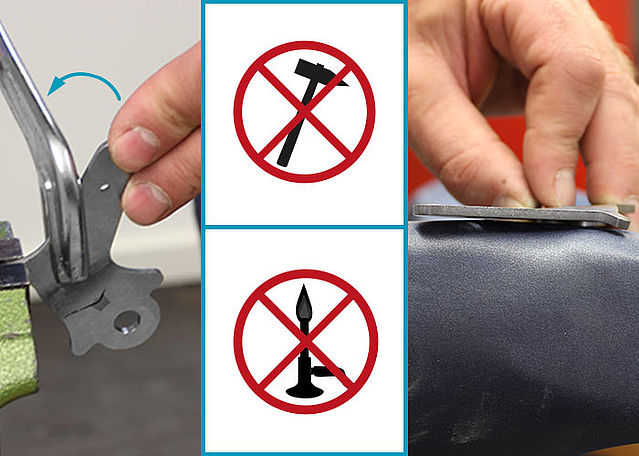
Adapt the system stirrup to the shape of the model. Bend the lower part of the system stirrup with a bending iron. Only bend in one direction.
Check if there is enough space for the reinforcement layers between the system stirrup and the model.Step 6/11
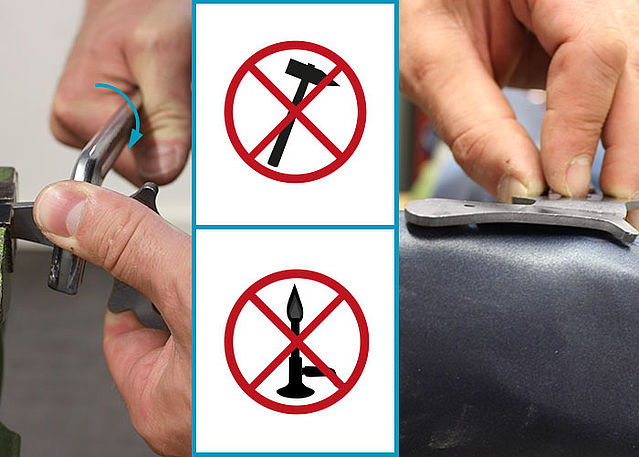
Adapt the system stirrup to the shape of the model. Bend the system stirrup foot with a bending iron. Only bend in one direction.
Check if there is enough space for the reinforcement layers between the system stirrup and the model.Step 7/11
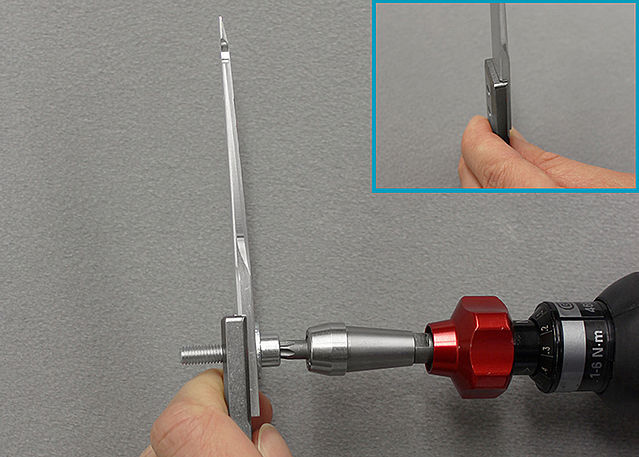
Press the system anchor to the joint’s upper part by using a washer and a screw (or the cover plate pressing aid of the plug + go system joints). To do so, use a torque screwdriver and a torque of 6 Nm. Then, remove washer and screw again.
Step 8/11
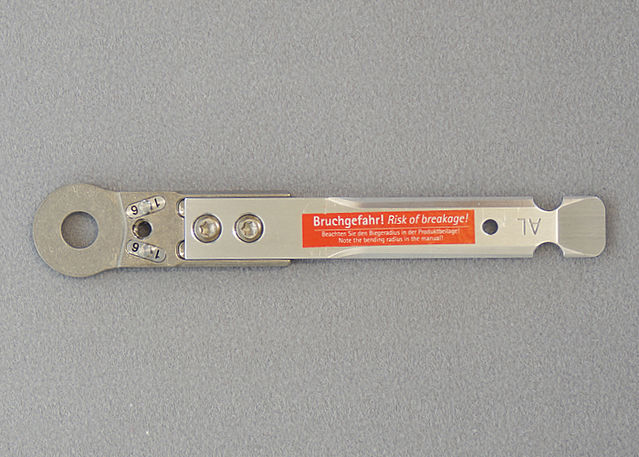
Secure the system anchor with the screw farther away from the joint at the joint's upper part before you begin bending.
Step 9/11
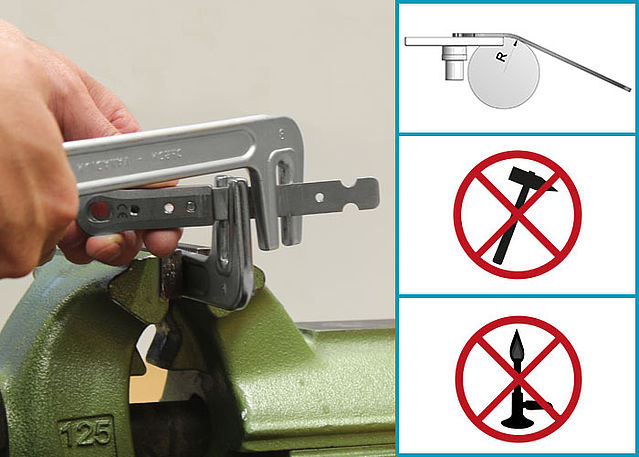
While bending, please consider the applicable bending radius and use proper tools (bending iron with round edges).
Note: You will find information on bending radii and the tools to be used in the instructions for use for System Side Bars and System Anchors.Step 10/11
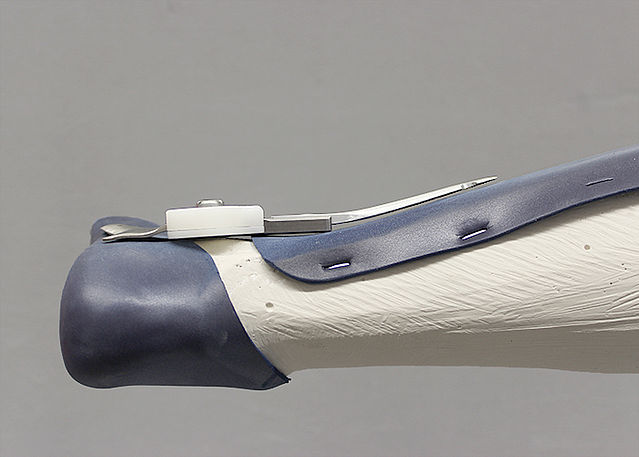
Check the distance from system anchor and stirrup to the positive cast. Please make sure to have enough space left for the reinforcing profile and the reinforcement layers in order to avoid later strains to the laminate. Thus, the joint areas stay parallel.
Step 11/11
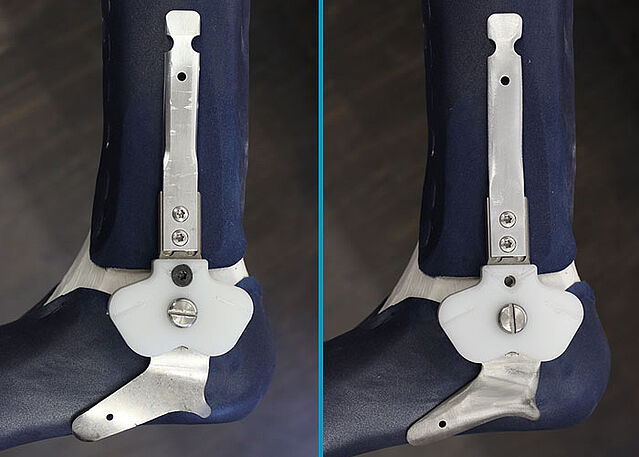
Grind the system stirrup and the system anchor. Always grind in the direction of rolling. Remove all notches from bending and avoid sharp edges.
Note: System ankle joints with dorsiflexion stop, which can be adjusted by filing, should always be mounted in their preassembled neutral position without changing the dorsiflexion stop.










-
Preparing the System String
-
Step 1/12
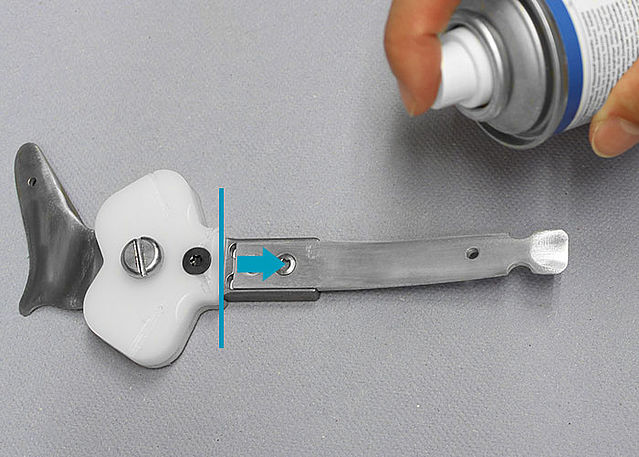
Use the activator spray as basis by spraying it thoroughly on both sides of the system anchor. Begin above the dummy.
Step 2/12
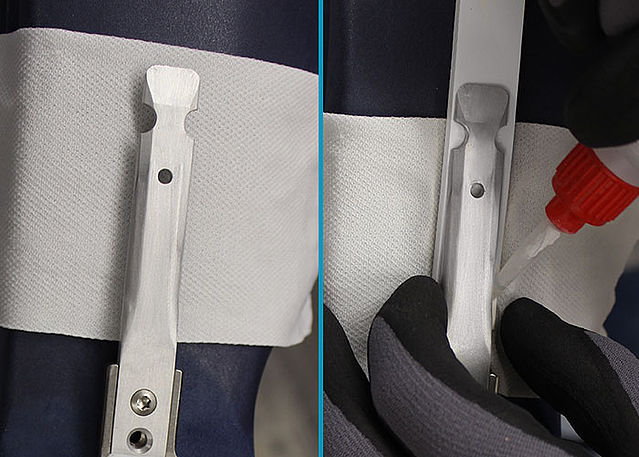
Use some stockinette as underlay when attaching the profile core. Heat the profile core and adhere it from below to the system anchor with medium viscous fast-acting adhesive.
Note: Mind the safety data sheet when using fast-acting adhesive.Step 3/12
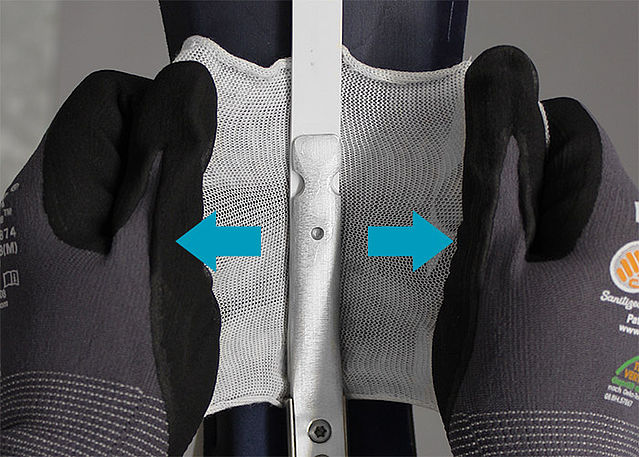
Pull at the stockinette from both sides and press the profile core from below to the system anchor in order to secure it.
Step 4/12
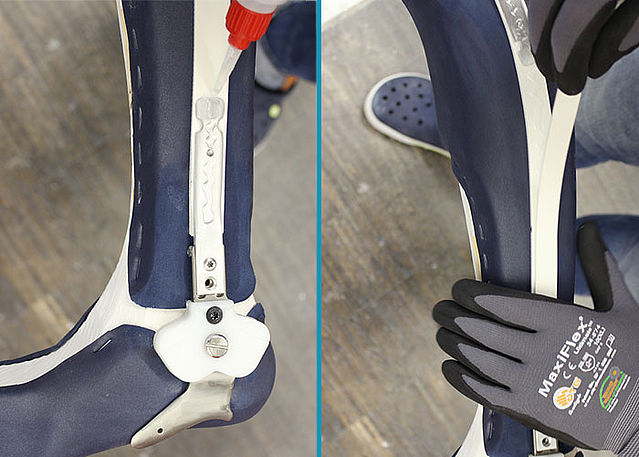
Reinforce the profile core of the tibial shell. Add some medium viscous fast-acting adhesive to the system anchor and profile core. Heat a second profile core and adhere it to the first.
Step 5/12
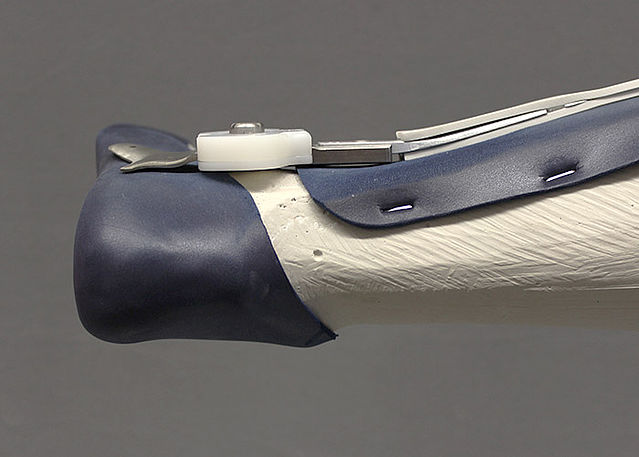
Example for the course of the reinforced profile core on a unilateral AFO.
Note: Have the profile core cool down to room temperature before removing it from the model.Step 6/12
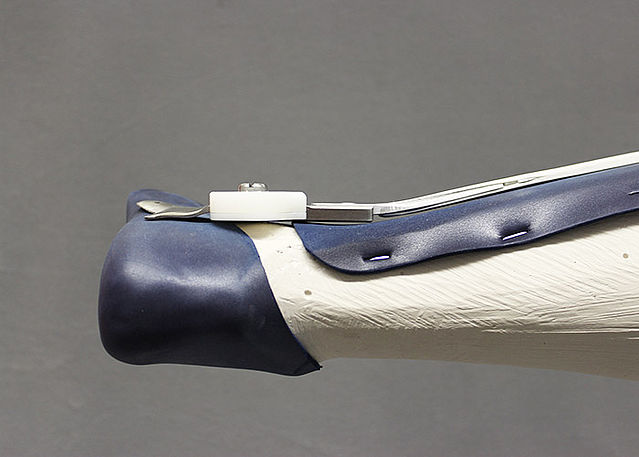
Please make sure to have enough space left for the reinforcement layers in order to avoid later strains to the laminate. Thus, for example, the joint areas stay parallel.
Step 7/12
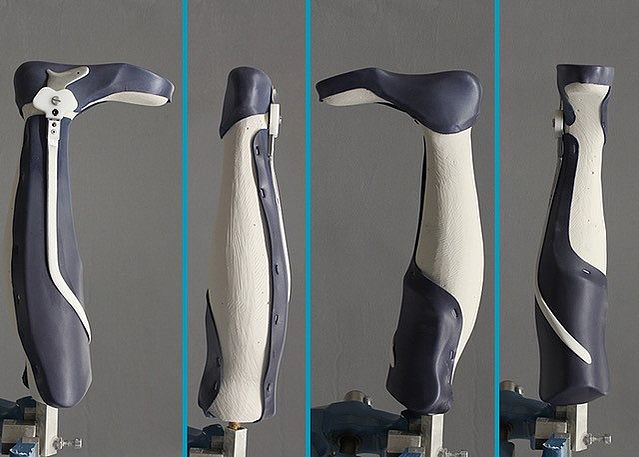
Example for the course of a ground profile core on a unilateral AFO. The double profile core increases the torsion resistance of the final orthosis.
Note: With this course, you set the stiffness of an orthosis in the particular areas. You can also use reinforcing carbon fibre braids for the transverse areas.Step 8/12
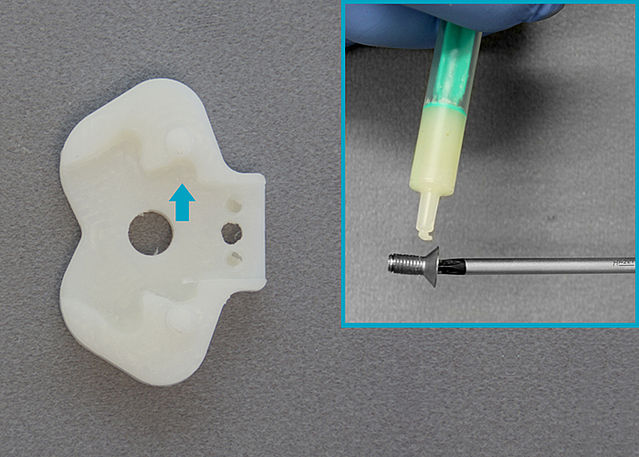
Insulate all screw threads as well as all hollows and grooves of the dummy with insulating wax.
Note: Use a small syringe in order to apply the insulating wax in a simple and accurate way.Step 9/12
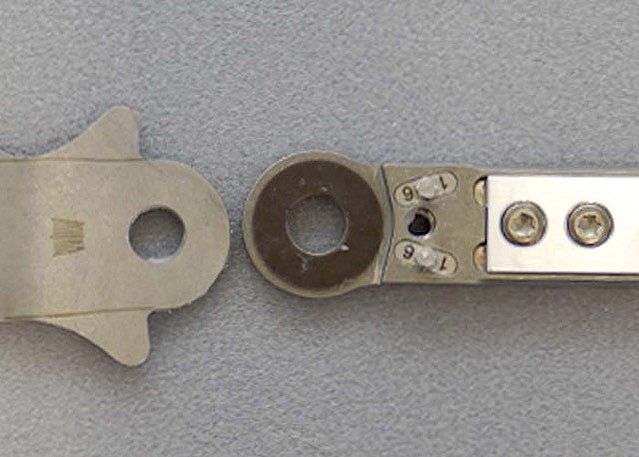
Insulate the joint areas of the system stirrup and the joint's upper part with a thin layer of insulating wax. Fill all hollows and grooves which shall remain resin-free as well. Insulate the sliding washer, too.
Step 10/12
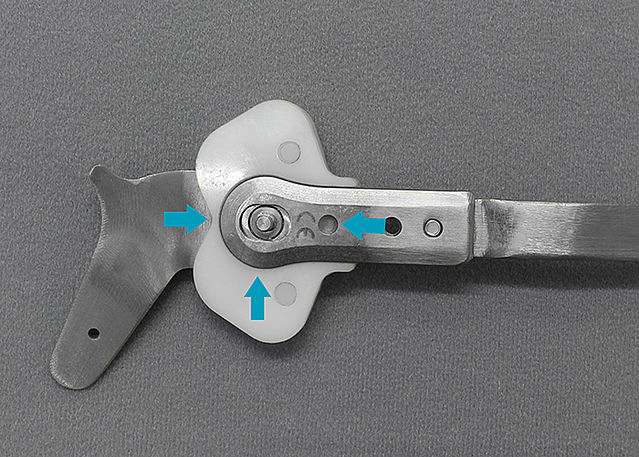
Mount the dummy in accordance with the exploded view drawing. Fill all hollows, grooves and screw threads with insulating wax.
Note: You can find exploded view drawings in our product catalogue System Joints and Articulated System Side Bars.Step 11/12
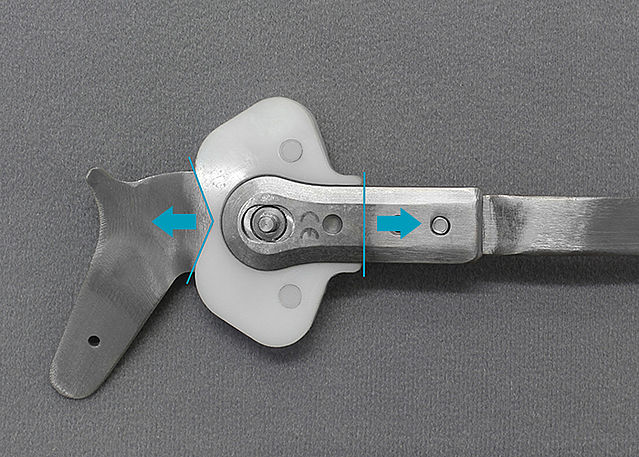
Clean all areas (from all sides) which shall be embedded into the laminate later. Remove insulating wax and grease residues.
Step 12/12
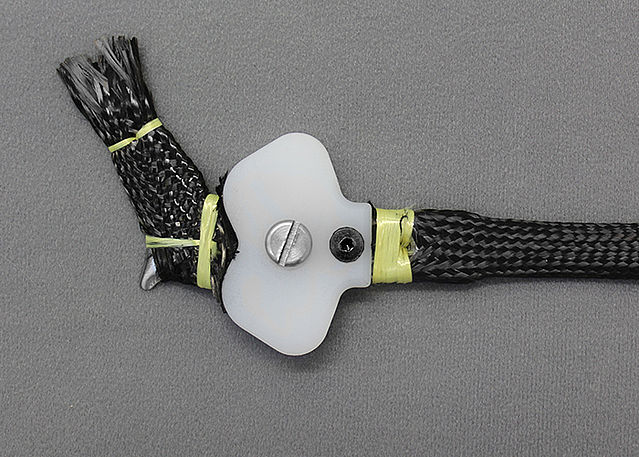
Please note! Due to the materials’ characteristics, always wear nitrile gloves while working with carbon or aramid fibre fabric.
Pull carbon fibre braided tube over the system stirrup as well as the profile core (incl. system anchor). Secure it as close to the joint as possible by sewing and/or tying it with aramid fibre roving. Then, stretch the fibres and secure the other end too, if necessary.
Please note! Only the stretched fibre can take on load and release it again!











-
Reinforcing the AFO
-
Step 1/21
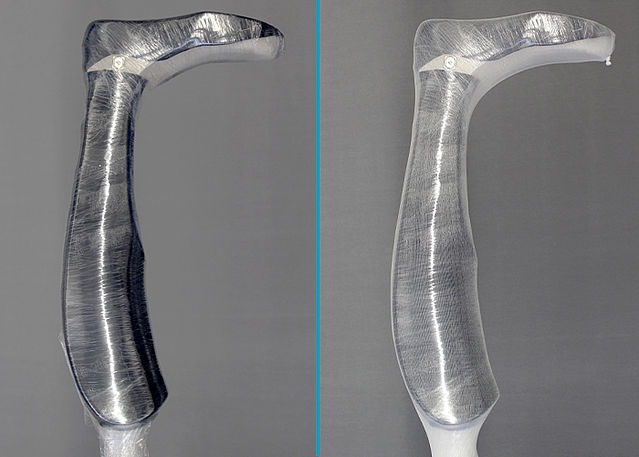
If the positive cast is still wet, insulate it with compression film first. Then, pull a PA reinforcement stocking over the positive cast. Now, the PVA film tube can easily be pulled over as base film layer.
Note: We recommend to use a 0.10mm thick film layer.Step 2/21
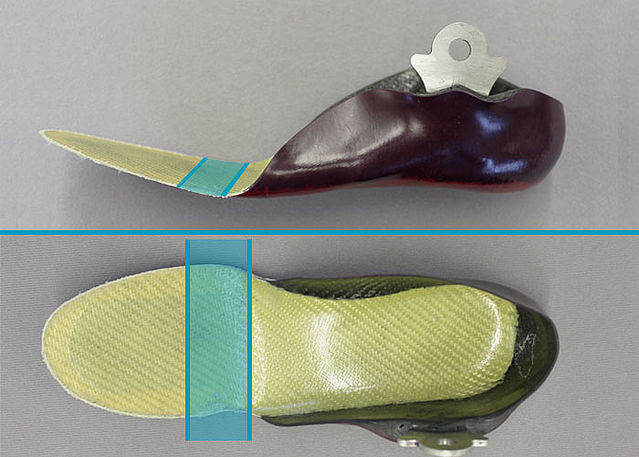
In order to increase the load capacity and useful life of the material of a partially flexible foot piece, reinforce the forefoot and rolling-off area (blue area) flexible and without a brim.
Note: A toes bank, or similar, can be attached subsequently if required.Step 3/21
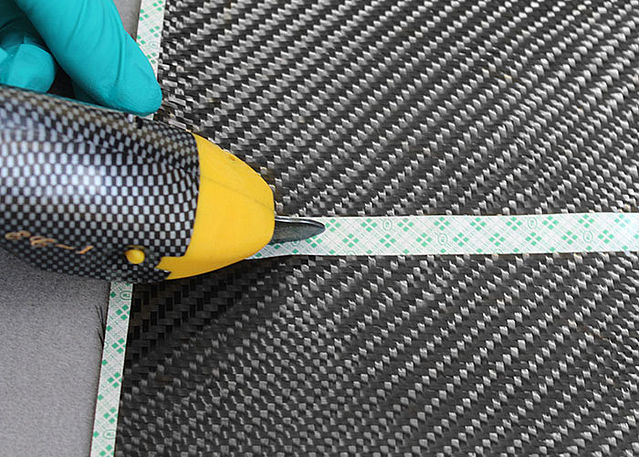
We recommend using electrical scissors (e.g. Easy Cutter) to cut the separate fabric layers (carbon as well as aramid).
Note: Use adhesive transfer tape without backing material to secure the cutting edges. This way, the edges will not fray.Step 4/21
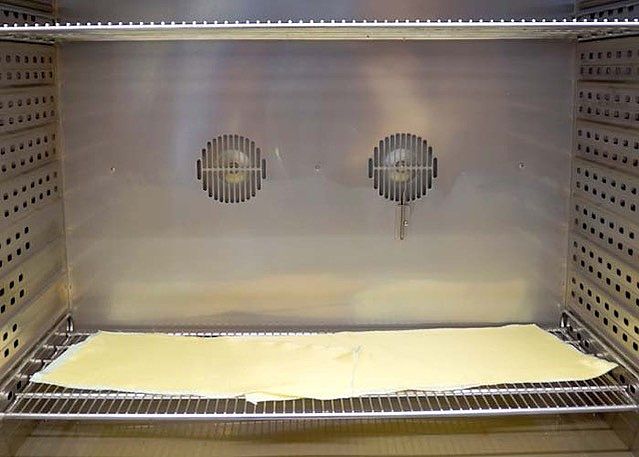
Dry the aramid fibre fabric at 120°C in an oven for at least one hour.
This way, you remove any moisture that has been absorbed during storage and improve the fabric’s properties for further processing.Step 5/21
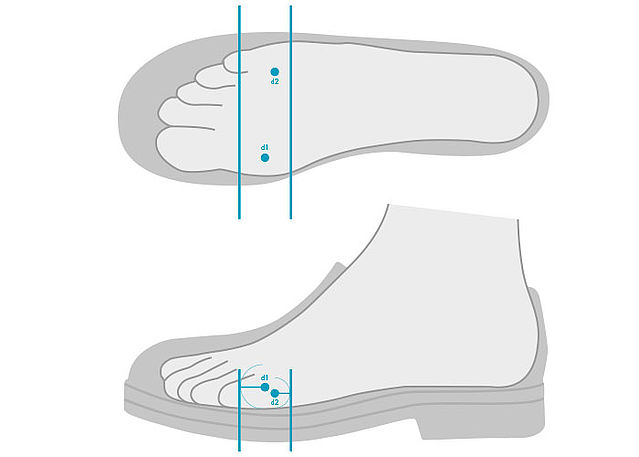
Consider the foot’s rolling-off area when laminating a partially flexible foot piece. It encompasses the area from anterior of the metatarsophalangeal joint (d1) of the big toe to posterior of the metatarsophalangeal joint (d2) of the little toe.
Step 6/21
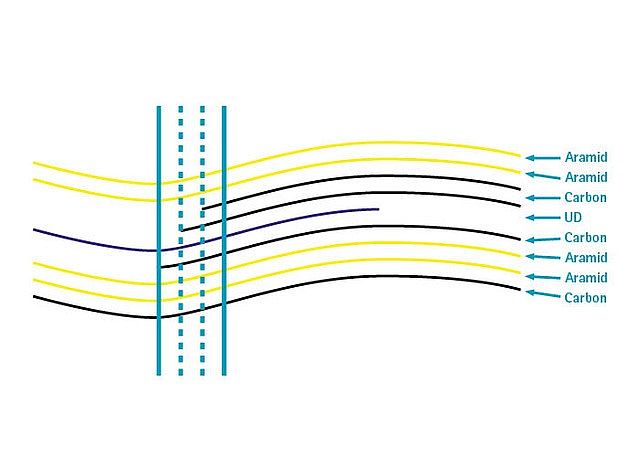
Consider the order of the different reinforcing layers when laminating a partially flexible foot piece. The quantity of the reinforcing layers should match the individual needs of your patient. The following reinforcing steps indicate where you can adhere more reinforcing layers, if necessary.
Note: Aramide is a flexible material that is particularly well suited for areas bearing dynamic loads.Step 7/21
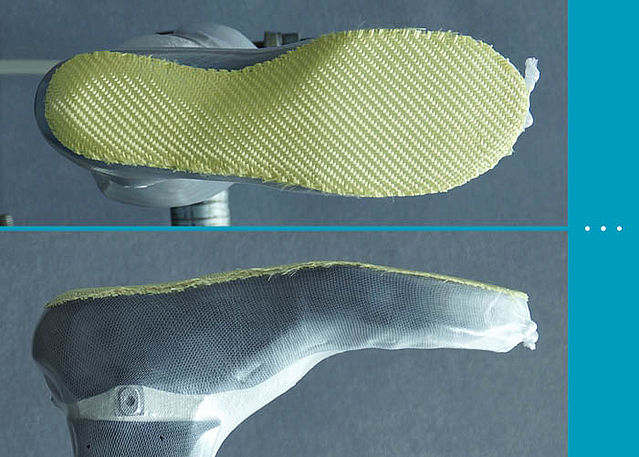
Scarcely cover an aramid fibre fabric pre-cut with adhesive spray and adhere it to the entire sole.
Use as many layers of aramid fibre fabric as you need (this is an exemplary picture).
Please note! Make sure to use the fibres stretched!Step 8/21
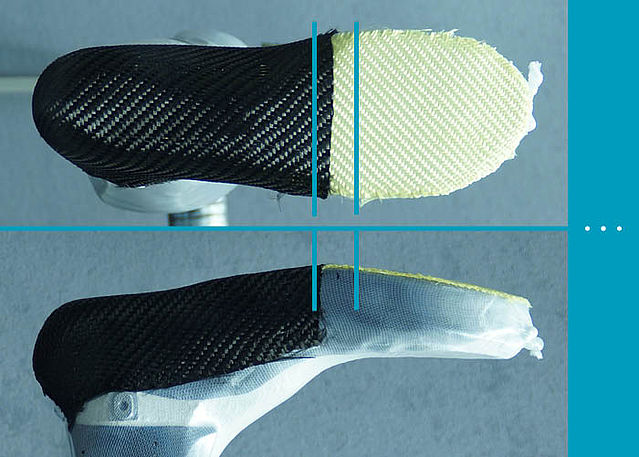
Scarcely cover a carbon fibre fabric pre-cut with adhesive spray and adhere it up to the rolling-off area. Then, cover the foot piece’s sole and sides with a carbon fibre fabric pre-cut.
Step 9/21
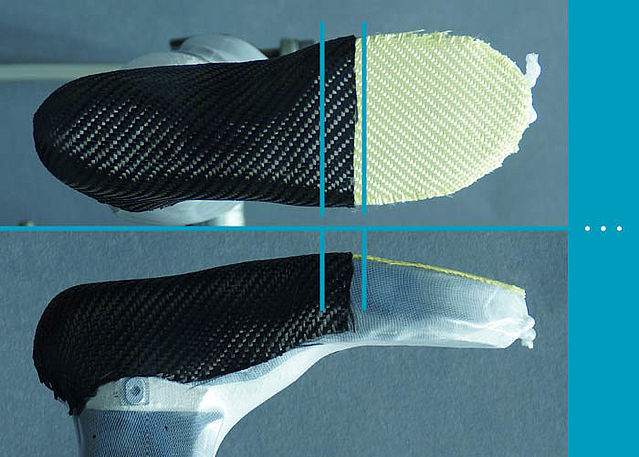
Keep on reinforcing with carbon fibre fabric. Each layer of the pre-cuts should end further ahead (distally) in the rolling-off area.
Use as many layers of carbon fibre fabric as you need (this is an exemplary picture).
Note: Never spray the already adhered reinforcement, but only the pre-cut which still needs to be adhered.Step 10/21
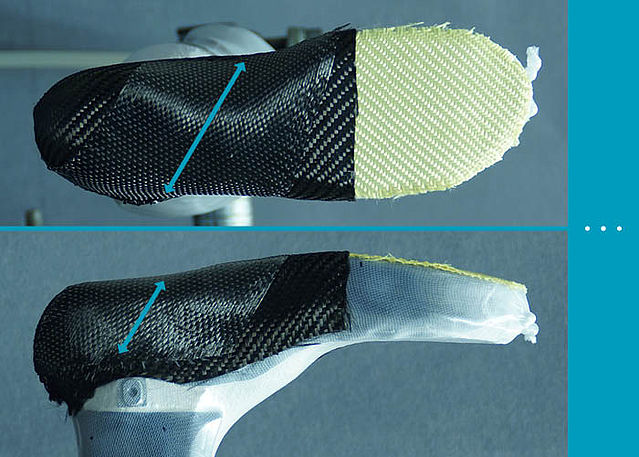
Diagonally reinforce from the joint to the toes with unidirectional carbon fibre band (10cm width). Mind the direction of the fibres (arrows).
Use as many layers of carbon fibre band as you need (this is an exemplary picture).Step 11/21
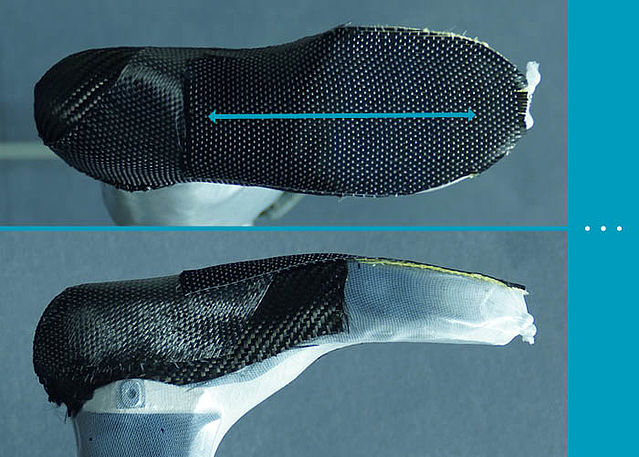
Reinforce the forefoot area with unidirectional carbon fibre band (10cm width). Mind the direction of the fibres (arrows).
Use as many layers of carbon fibre band as you need (this is an exemplary picture).Step 12/21
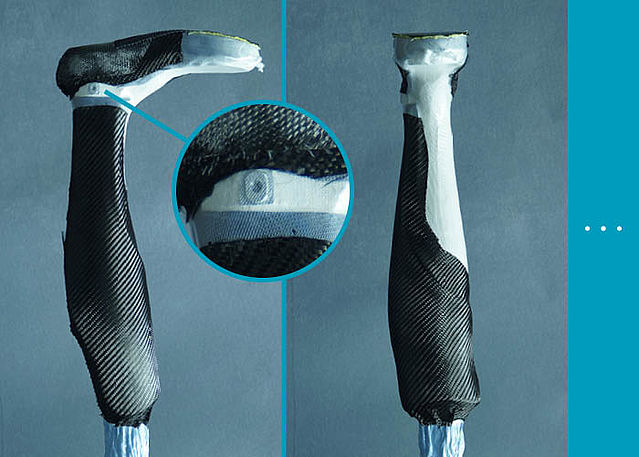
Reinforce the area of the lower leg with carbon fibre fabric. Spare the joint retainer.
Use as many layers of carbon fibre fabric as you need (this is an exemplary picture).Step 13/21
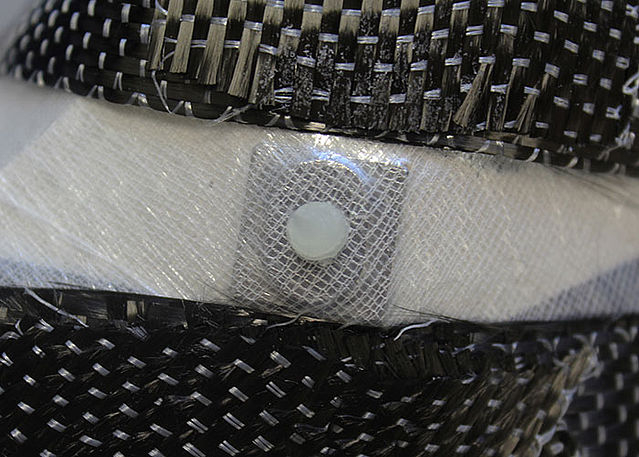
Apply some insulating wax to the thread of the joint retainer in order to seal it airtight.
Step 14/21
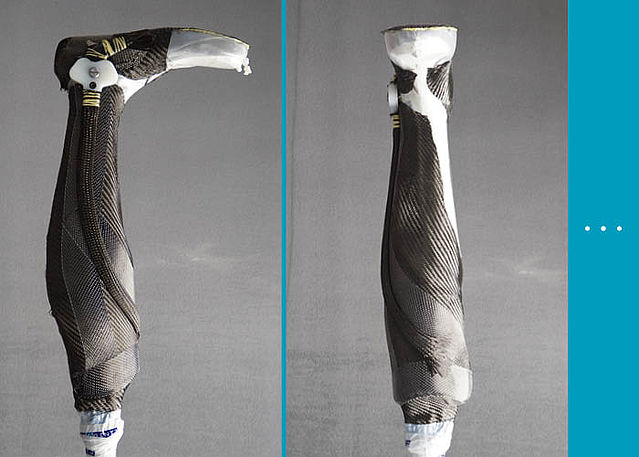
Mount the dummy with the system string to the joint retainer. Find the correct position (the shape of the joint retainer matches the hollow for the bearing nut of the joint's upper part). Screw the retaining screw through the base film into the joint retainer and screw it tight.
Step 15/21
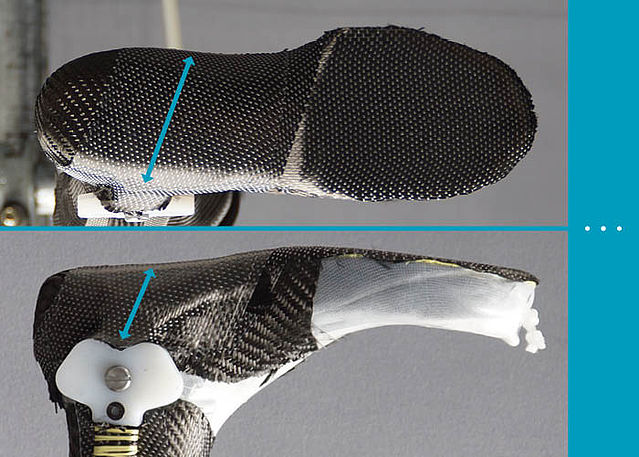
Attach unidirectional carbon fibre band (10cm width) under the foot again. Mind the direction of the fibres (arrows).
Use as many layers of carbon fibre band as you need (this is an exemplary picture).Step 16/21
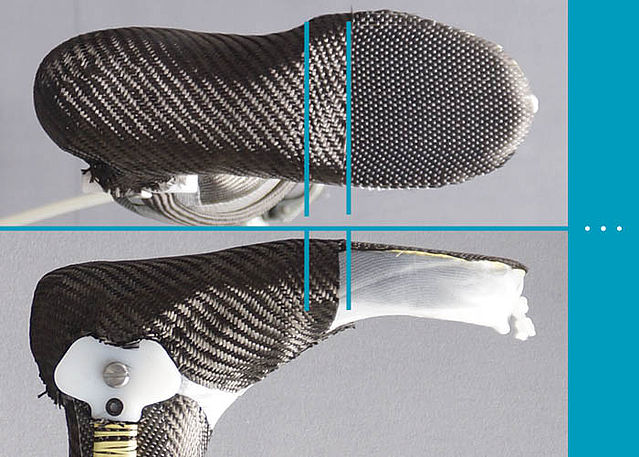
Keep on reinforcing with carbon fibre fabric. Each layer of the pre-cuts should end further ahead (distally) in the rolling-off area.
Use as many layers of carbon fibre band as you need (this is an exemplary picture).Step 17/21
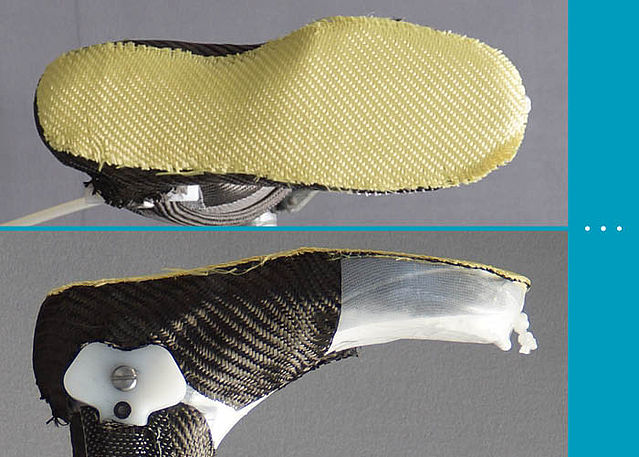
Finish reinforcing the partially flexible foot piece with aramid fibre fabric. While doing so, cover the entire sole.
Use as many layers of aramid fibre fabric as you need (this is an exemplary picture).Step 18/21

Reinforce the lower leg area along the system string (1, 2 and 3) with unidirectional carbon fibre band. Mind the direction of the fibres (arrows).
Here again, reinforce the area under the patella.Step 19/21
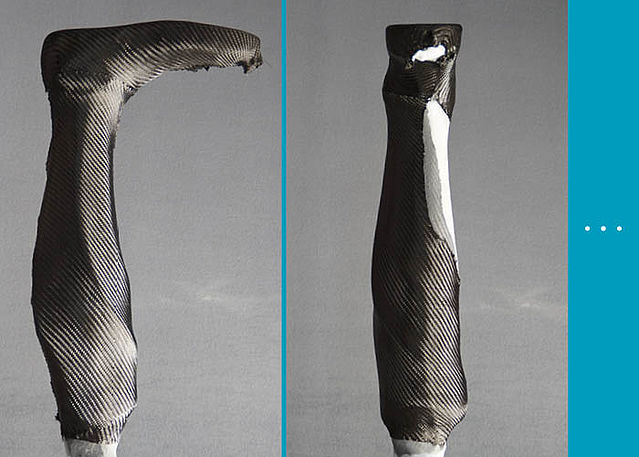
Attach a final layer of carbon fibre fabric. Cover the dummy as well.
Step 20/21
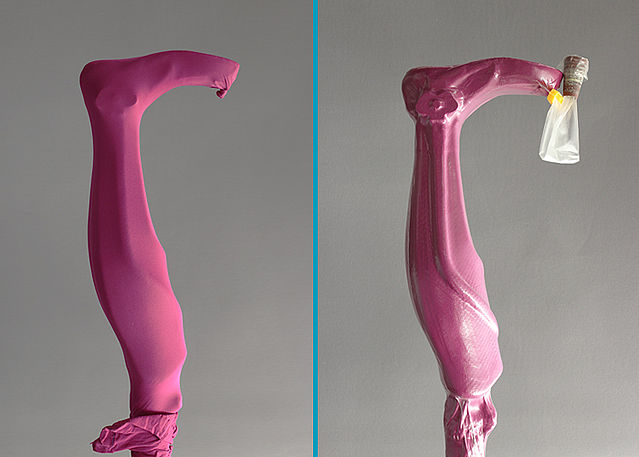
Finally, in order to fix the reinforcement layers, pull a decorative fabric or a PA reinforcement stocking (for a carbon look) over the model. Thus, the PVA film tube can easily be pulled over as top film layer.
Step 21/21
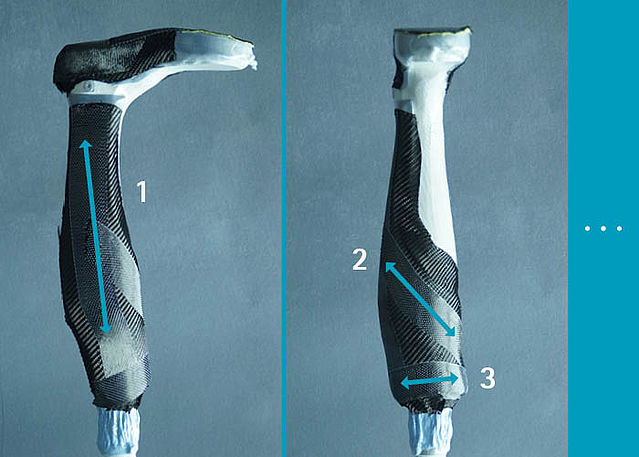
Reinforce with carbon fibre band along the profile core (1, 2 and 3). Also reinforce the area under the patella. Mind the direction of the fibres (arrows).
Use as many layers of carbon fibre band as you need (this is an exemplary picture).




















-
Laminating the AFO
-
Step 1/5
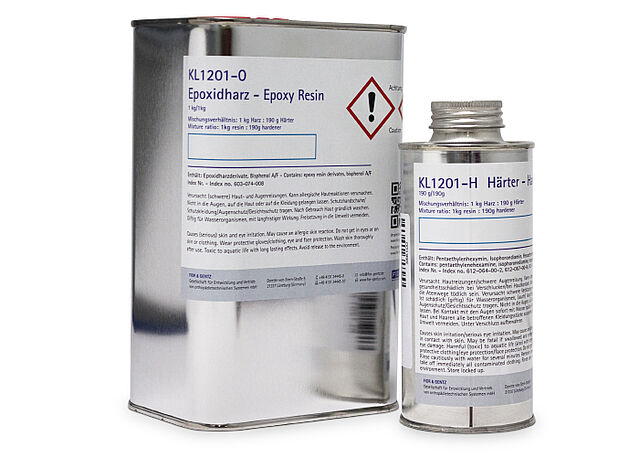
This production technique is especially adapted to our epoxy resin and hardener.
Please note! Follow the processing instructions and the safety data sheets for our epoxy resin and hardener. Precisely stick to the mixture ratio and thoroughly mix resin and hardener.Step 2/5
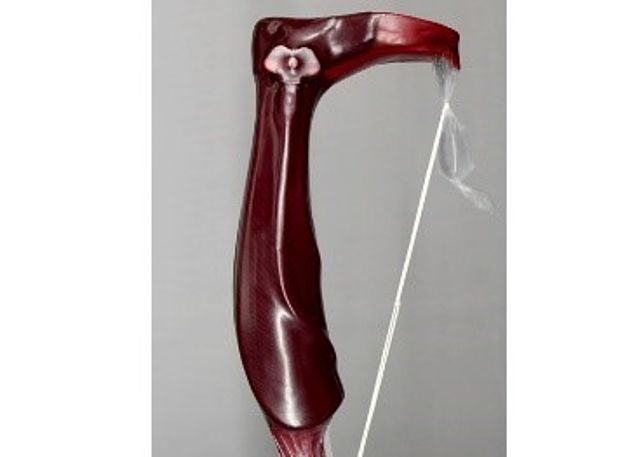
Mix a sufficient amount of resin and hardener. Let the fabrics soak completely and rub surplus resin out.
Step 3/5

Press out the foot piece in order to receive the highest possible fibre volume ratio. While doing so, protect the film with some padding material and make sure to maintain the form of the modified toe spring.
Note: Use available shaping dummies.Step 4/5
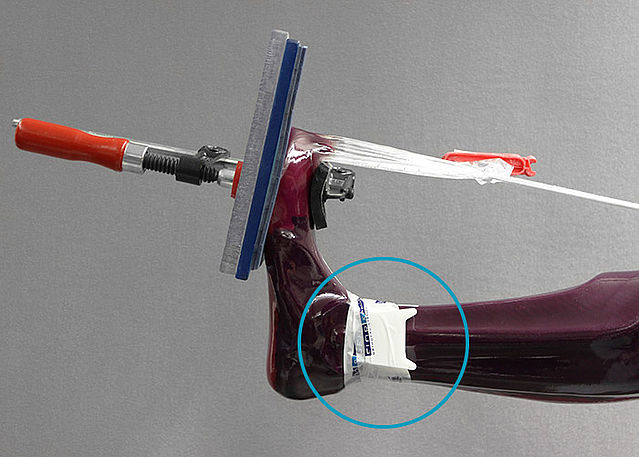
The shaping dummy increases the fibre volume ratio at the system joint area and facilitates mounting the NEURO SWING cover plate later. Align the shaping dummy, fitting the joint's upper part, and secure it with adhesive tape.
Step 5/5
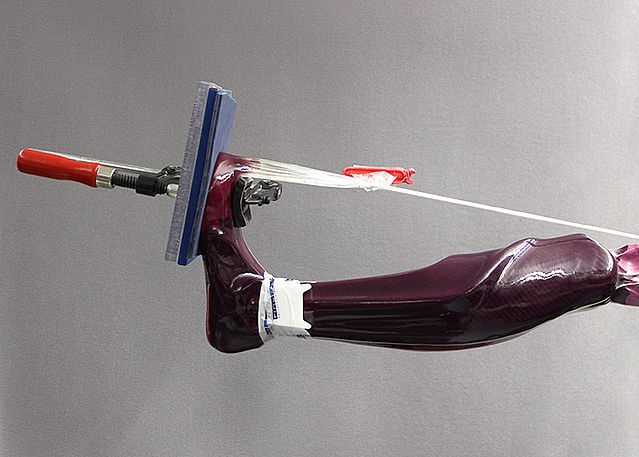
Let the model harden over night (at least 10 hours), under vacuum and at room temperature.
Please note! Also follow the processing instructions for epoxy resin.




-
Cutting the AFO
-
Step 1/5
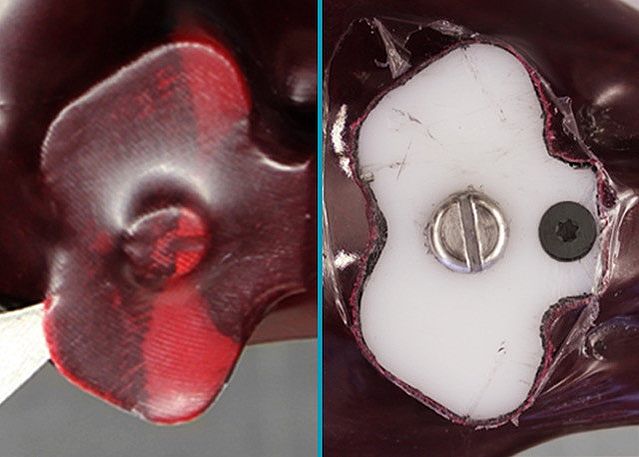
Use a sharp knife to remove the thin laminate layer over the assembly/lamination dummy.
Step 2/5
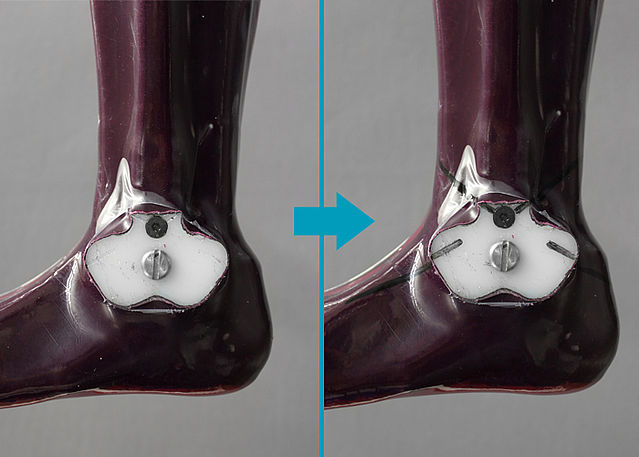
Mark the cutting lines on the laminate. To do so, prolong the cutting lines of the dummy, which enable you to cut out the orthosis as close to the joint as possible. Remove the screws.
Step 3/5
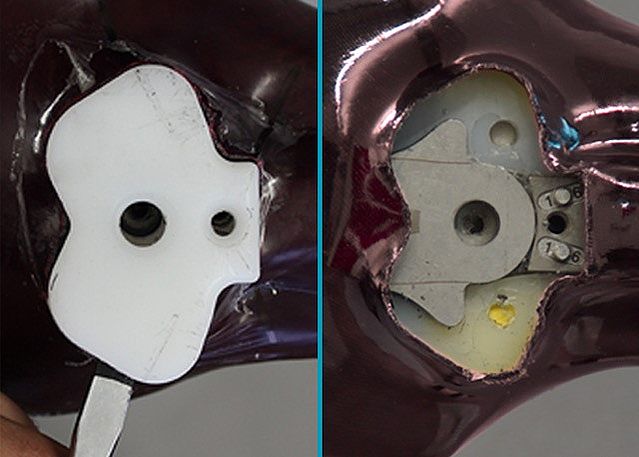
Carefully lever the dummy from dorsal out of the laminate. Make sure not to damage the joint areas in the process.
Step 4/5
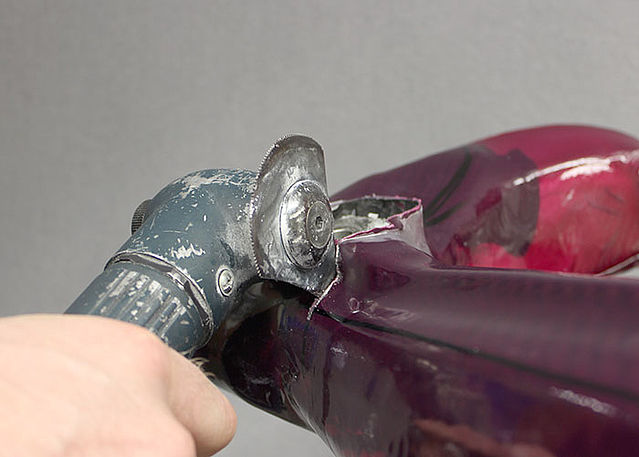
Use an oscillating saw to saw along the cutting edges in order to remove the orthosis parts from the model. You can see the recommended saw blade in the picture. Thus, you can saw very close to the system joint without damaging it.
Step 5/5
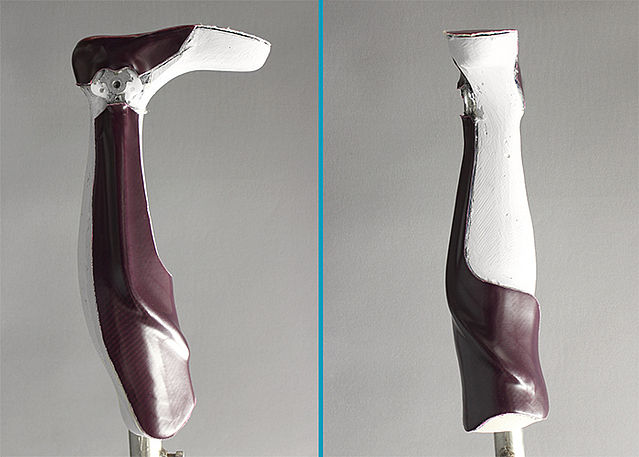
Remove all laminate parts which are no longer necessary. Then, you can remove the orthosis parts from the model.





-
Tempering and Grinding the AFO
-
Step 1/4
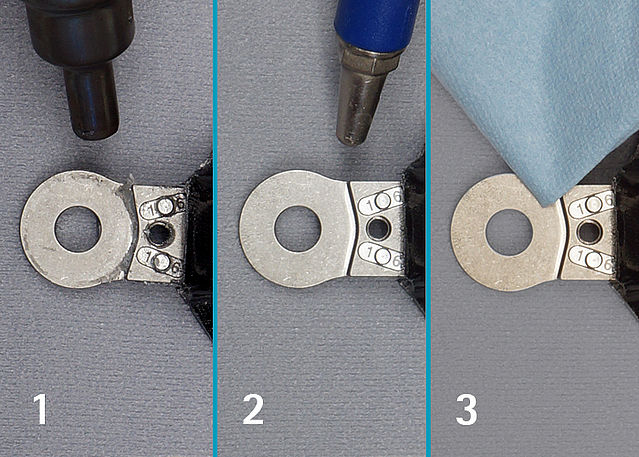
Clean all the joint areas as well as the system stirrup before you temper the parts of the orthosis. Heat all wax residues with a hot air blower (1) and blow the liquefied insulating wax out of the hollows (2). Remove all residues with a cloth (3). Remove the PVA film tube as well.
Step 2/4
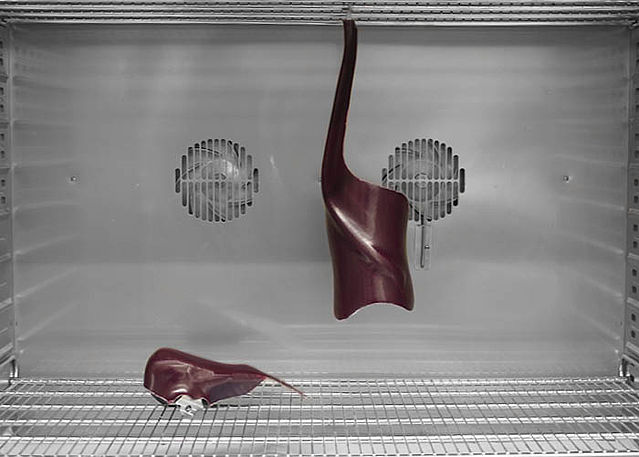
Temper all orthosis parts before grinding them. Place the orthosis parts into a cold convection oven and heat it up slowly. When tempered, the orthosis parts are stable and can be worked in the best possible way.
Please not! Also follow the processing instructions for epoxy resin.Step 3/4
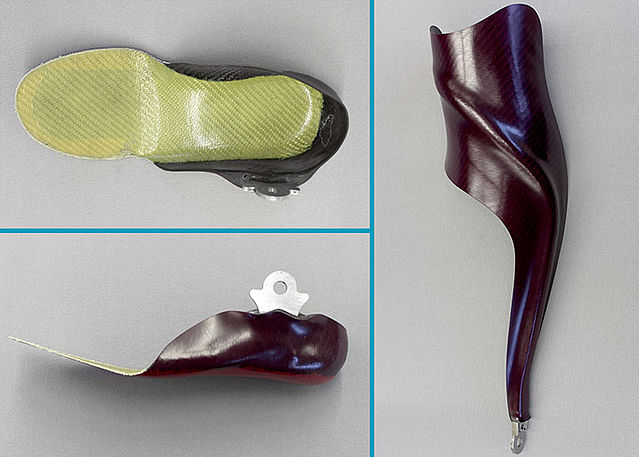
Grind the edges of the orthosis parts (e.g. with a belt grinder). However, it is essential to avoid predetermined breaking points in the metal! Also make sure that the flexible area of the foot piece is even (without brinks).
Note: Apply some insulating wax to the aramid fibre edges and subsequently grind them with coarse sandpaper.Step 4/4
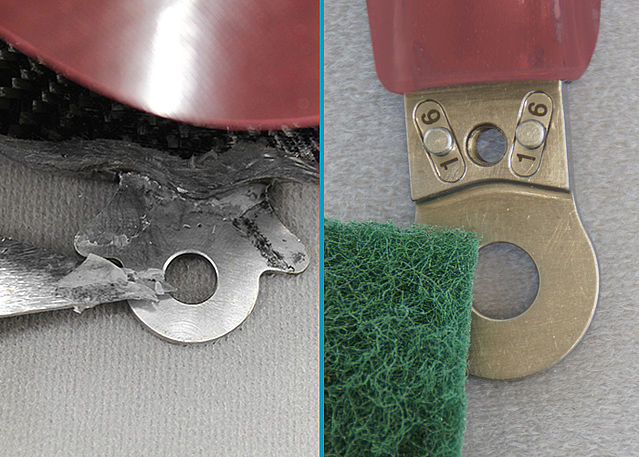
In order to remove all possibly caused notches, remove resin residues from the joints' surfaces with a sharp knife and polish them subsequently (e.g. with a marbling tool).
Clean all screw drives (e.g. with LOCTITE® 7063 Super Clean) in order for the screws to be effectively fixed later on.
Note: Mind the safety data sheet when using the Super Clean LOCTITE® 7063.



-
Mounting the System Joint
-
Step 1/1
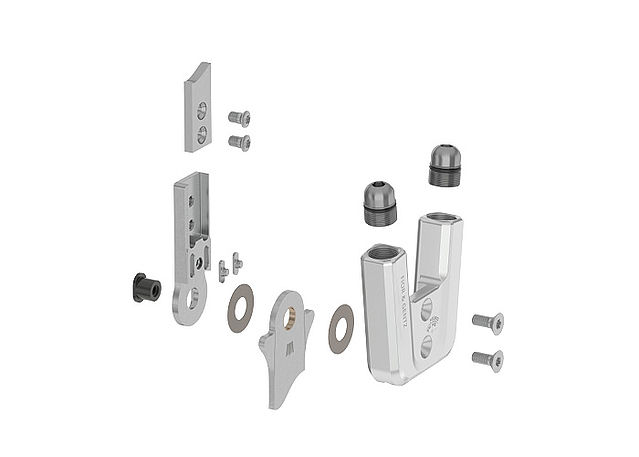
Mount the system joint according to the assembly instruction in the instructions for use of each respective system joint.
Note: You can find instructions for use in the download section as well.
-
Applying the Padding Material
-
Step 1/3

Cut some attachable padding material into shape for the orthosis (e.g. the xDry towelling padding material).
Note: You can use the dummy for the padding material as a template.Step 2/3
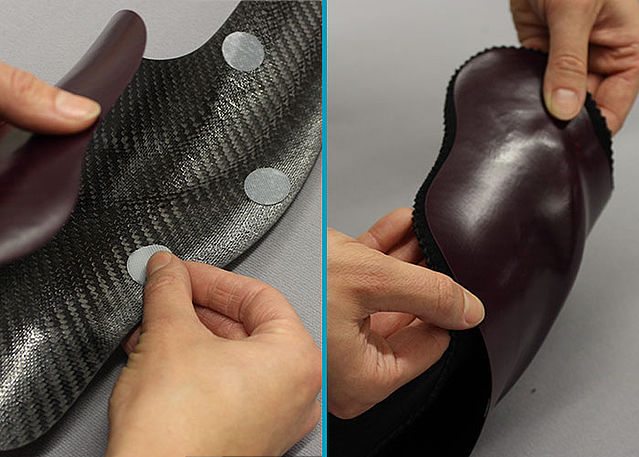
Adhere hook dots to appropriate areas of the orthosis shells. Attach the padding material.
Step 3/3
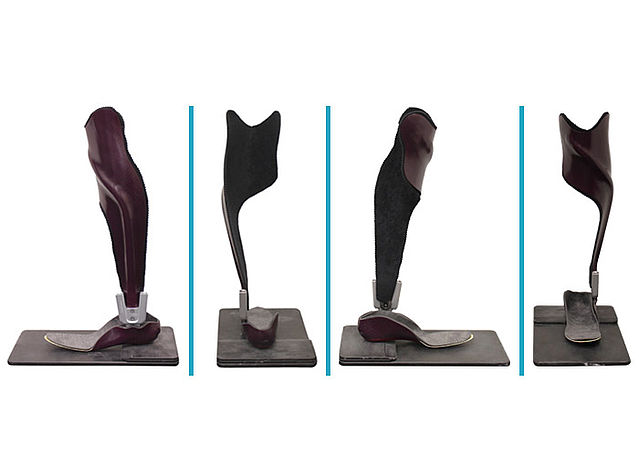
Now, the orthosis can be tried on.



-
Alignment of the Orthosis
-
Step 1/1
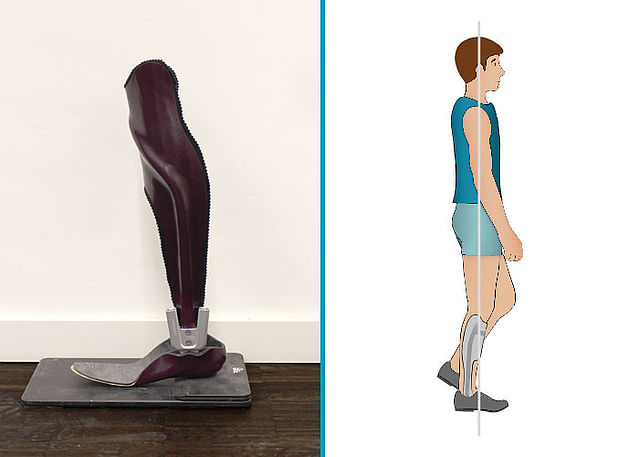
The alignment of the orthosis is based on the individual, gait-related normal posture of the patient. In mid stance, this results in a gait pattern that is as physiological as possible.
Last Update: 12 October 2018
FIOR & GENTZ
Gesellschaft für Entwicklung und Vertrieb von orthopädietechnischen Systemen mbH
Dorette-von-Stern-Straße 5
D-21337 Lüneburg
Tel.: +49 4131 24445-0
Fax: +49 4131 24445-57
E-Mail: info(at)fior-gentz.de
Beratung und Technischer Support
